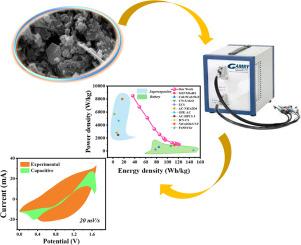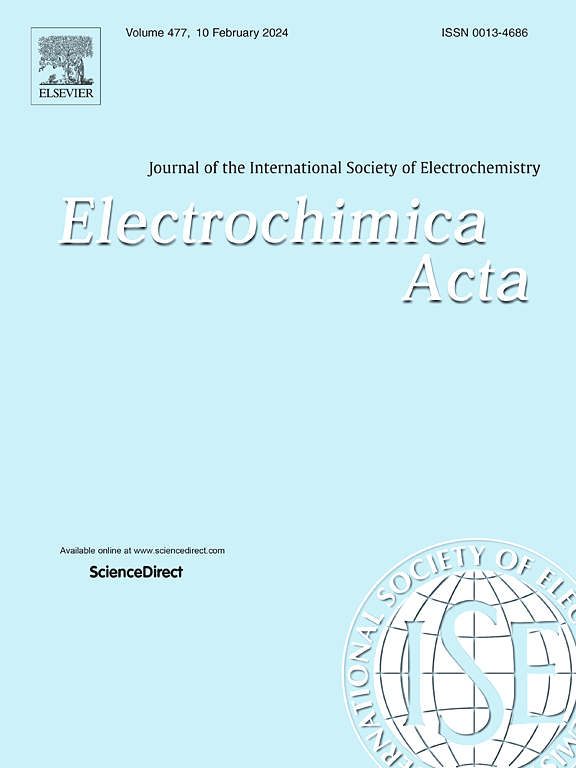Optimization strategies for binary transition metal selenides in high-performance supercapacitor-battery hybrid devices
IF 5.5
3区 材料科学
Q1 ELECTROCHEMISTRY
引用次数: 0
Abstract
Transition metal selenides are revolutionizing the landscape of asymmetric supercapacitors due to their outstanding electrochemical characteristics and offering exceptional specific capacitance. But still crave for stability during cycling, limiting active sites, and conductivity balances that restrict rate capability. Herein, we present the optimization of binary metal selenides synthesized via a simple hydrothermal method for asymmetric supercapacitors. By fine-tuning the metal ratio, we enhance both energy storage capacity and cycling stability and significantly outperform conventional monometallic electrodes. X-ray diffraction (XRD) techniques, energy-dispersive X-ray spectroscopy (EDX), and scanning electron microscopy (SEM) were employed to characterize the phase composition, elemental and surface morphology of all synthesized nanomaterials. In a three-electrode configuration, Ni0.5Co0.5Se2 demonstrated the superior electrochemical performance of all the selenide samples with a specific capacity of 1719.9 C/g and 805.6 C/g (1342.6 F/g) at 2 mV/s and 1.8 A/g, respectively. After that, Ni0.5Co0.5Se2 was employed as a working electrode in an asymmetric supercapacitor, with counter carbon being a counter electrode. Electrochemical evaluation of an asymmetric device in a two-electrode setup showed a remarkable specific energy of 120.9 Wh/kg at the specific power of 1020 W/kg, and it maintained specific energy of 36.3 Wh/kg while achieving an exceptional specific power of 8512 W/kg. Additionally, the prepared device exhibited excellent capacity retention of 96.9 % after 4000 continuous galvanostatic charge/discharge cycles at 10 A/g. Further electrochemical analysis of the asymmetric device was conducted by using a simulation approach to assess diffusive and capacitive processes. The impressive performance of Ni0.5Co0.5Se2 confirms its potential as a promising candidate for asymmetric supercapacitor applications, paving the way for future innovations in sustainable, high-capacity energy storage.


求助全文
约1分钟内获得全文
求助全文
来源期刊

Electrochimica Acta
工程技术-电化学
CiteScore
11.30
自引率
6.10%
发文量
1634
审稿时长
41 days
期刊介绍:
Electrochimica Acta is an international journal. It is intended for the publication of both original work and reviews in the field of electrochemistry. Electrochemistry should be interpreted to mean any of the research fields covered by the Divisions of the International Society of Electrochemistry listed below, as well as emerging scientific domains covered by ISE New Topics Committee.
 求助内容:
求助内容: 应助结果提醒方式:
应助结果提醒方式:


